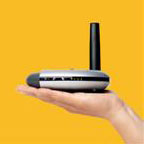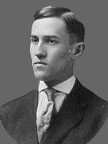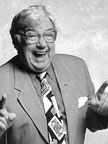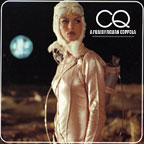Thursday 2 March, 2006, 09:48 - Spectrum Management
Posted by Administrator
Posted by Administrator
 Spectrum administrations or radio regulators, whatever phrase you care to pick, tend to be staffed by enthusiastic and intelligent staff; after all, it's a complex field this radio malarkey. However, what most staff lack (and most would readily admit to) is any real experience or expertise in the radio spectrum itself. Why is this? Well, other than working for a regulator or a radio user (such as a mobile or broadcasting company) there are very few ways to gain any real radio skills. For example, most degrees in technology of one kind or another will cover 'telecommunications' and may even stray into 'electromagnetism' but few, if any, give any real chance to learn about the radio spectrum, how it is used and how to manage it. There are various manufacturers who offer training on their suite of spectrum management software and monitoring hardware, which is great if you happen to have their tools, otherwise it would be like learning how to ride a bike and then being given the job as a traffic cop!
Spectrum administrations or radio regulators, whatever phrase you care to pick, tend to be staffed by enthusiastic and intelligent staff; after all, it's a complex field this radio malarkey. However, what most staff lack (and most would readily admit to) is any real experience or expertise in the radio spectrum itself. Why is this? Well, other than working for a regulator or a radio user (such as a mobile or broadcasting company) there are very few ways to gain any real radio skills. For example, most degrees in technology of one kind or another will cover 'telecommunications' and may even stray into 'electromagnetism' but few, if any, give any real chance to learn about the radio spectrum, how it is used and how to manage it. There are various manufacturers who offer training on their suite of spectrum management software and monitoring hardware, which is great if you happen to have their tools, otherwise it would be like learning how to ride a bike and then being given the job as a traffic cop!Step up to the lectern then, various organisations who have put together training courses which can be taken by anyone but are aimed at giving the opportunity to learn about this fascinating subject. That being said, there are not many such organisations: in fact it would seem there are only a small handful in the world!
 The first such organisation is the National Telecommunications and Information Administration (NTIA). The NTIA runs an annual Spectrum Management Training Seminar over a one week period, however this is only open to 'U.S. Government agencies and contractor personnel nominated by Federal agencies'. With only 25 spaces, the course is always over-subscribed so the chance of getting a place is small. Not a great start! However, the NTIA, together with the United States Telecommuications Training Institute (USTTI) run another annual radio frequency spectrum management course every spring which is open to 'representatives of developing nations', who are sponsored by the U.S. government and thus can attend the course for free!
The first such organisation is the National Telecommunications and Information Administration (NTIA). The NTIA runs an annual Spectrum Management Training Seminar over a one week period, however this is only open to 'U.S. Government agencies and contractor personnel nominated by Federal agencies'. With only 25 spaces, the course is always over-subscribed so the chance of getting a place is small. Not a great start! However, the NTIA, together with the United States Telecommuications Training Institute (USTTI) run another annual radio frequency spectrum management course every spring which is open to 'representatives of developing nations', who are sponsored by the U.S. government and thus can attend the course for free! The USTTI (which is a joint U.S. Government and industry sponsored, not-for-profit organisation) also run a number of courses of varying lengths covering spectrum management and spectrum monitoring, each of which is sponsored by a manufacturer (such as Agilent, TCI or Rohde & Schwarz). The USTTI courses are provided for free, whilst participants have to cover their travel and subsistence costs, and applications have to be made 16 weeks (4 months) in advance. Nothing in life is every truly free and given the level of sponsorship which the commercial organisations must give to each event, one wonders how much of a sales pitch such courses are.
The USTTI (which is a joint U.S. Government and industry sponsored, not-for-profit organisation) also run a number of courses of varying lengths covering spectrum management and spectrum monitoring, each of which is sponsored by a manufacturer (such as Agilent, TCI or Rohde & Schwarz). The USTTI courses are provided for free, whilst participants have to cover their travel and subsistence costs, and applications have to be made 16 weeks (4 months) in advance. Nothing in life is every truly free and given the level of sponsorship which the commercial organisations must give to each event, one wonders how much of a sales pitch such courses are. Next are the Telecommunications Regulatory Master Classes (TRMC) run by a UK company called InterConnect Communications (ICC). The TRMC's last a week and provides a solid grounding in all aspects of spectrum management. The course is not cheap at over GBP2750 for a week but this does include accomodation and most meals. The course programme appears to be aimed specifically at giving plenty of relevant information to attendees whether experienced or novice and the presenters are all experienced and knowledgeable. Best of all, the course is independent of suppliers or vendors which means that the one thing it isn't is a sales pitch!
Next are the Telecommunications Regulatory Master Classes (TRMC) run by a UK company called InterConnect Communications (ICC). The TRMC's last a week and provides a solid grounding in all aspects of spectrum management. The course is not cheap at over GBP2750 for a week but this does include accomodation and most meals. The course programme appears to be aimed specifically at giving plenty of relevant information to attendees whether experienced or novice and the presenters are all experienced and knowledgeable. Best of all, the course is independent of suppliers or vendors which means that the one thing it isn't is a sales pitch!Finally, there is a course entitled Understanding Modern Spectrum Management which is run jointly by spectrum publisher PolicyTracker and transport and telecommunications technology consultant Helios. This course is split into two parts: an initial 'technical' section designed to allow attendees to understand what spectrum is and how it fits together (and why, for example, some frequencies might be worth more than others); and a second, high level policy discussion on some of the 'hot topics' in spectrum. Again it is independent of suppliers or vendors. The cost is similar to the TRMC at around GBP2750 for 5 days, and it is held in the prestigious Oxford University.
There must be other courses elsewhere in the world: If you know of any please contact me as I'm forever getting asked what is out there.
add comment
( 1537 views )
| permalink
| 



 ( 2.9 / 2461 )
( 2.9 / 2461 )




 ( 2.9 / 2461 )
( 2.9 / 2461 )
Tuesday 28 February, 2006, 10:39 - Radio Randomness
Wandering past a local bus-stop, I was intrigued by an advertising poster which shouted, "wireless broadband with no strings attached". Like many people, I have a wireless broadband network at home, however this ad seemed to be offering something different i.e. a broadband connection to the home which didn't rely on wires. Now I know that with a 3G mobile data card you can get a reasonably broadband (circa 256 kbps) connection, but the implication of the poster was that what was on offer was more akin to the services offered by wired broadband. A bit of digging later, I discovered that the service being advertised was one offered by NOW and was indeed a true wire-free broadband to the home connection (so called Broadband Fixed Wireless Access or BFWA). NOW is a trade name for UK Broadband which in turn is a division of
A bit of digging later, I discovered that the service being advertised was one offered by NOW and was indeed a true wire-free broadband to the home connection (so called Broadband Fixed Wireless Access or BFWA). NOW is a trade name for UK Broadband which in turn is a division of  Pacific Century CyberWorks (PCCW), a Hong Kong based company who also offer BFWA services over the whole of the island of Hong Kong too. UK Broadband won 13 of the 15 regional 3.4 GHz licences available through Ofcom's auction during 2003, securing them 2 x 20 MHz of spectrum (3480 - 3500 MHz paired with 3580 - 3600 MHz). They later bought up one of the other bidding companies giving them 14 of the 15 licences and virtually nationwide coverage.
Pacific Century CyberWorks (PCCW), a Hong Kong based company who also offer BFWA services over the whole of the island of Hong Kong too. UK Broadband won 13 of the 15 regional 3.4 GHz licences available through Ofcom's auction during 2003, securing them 2 x 20 MHz of spectrum (3480 - 3500 MHz paired with 3580 - 3600 MHz). They later bought up one of the other bidding companies giving them 14 of the 15 licences and virtually nationwide coverage. UK Broadband uses TD-CDMA technology from IPWireless. TD-CDMA is a 3G technology and is part of the UMTS stable. This is in contrast to PCCW's network in Hong Kong which is based on WiMAX. In some ways the choice of this technology is odd, partly from a commercial stand-point as there would have been obvious economies of scale if the company had used the same technology in all its markets; but also because the spectrum they won is paired, making it suitable for frequency division duplex (FDD) technologies, rather than the time division duplex (TDD) technology they have settled on. At the end of the day, financial decisions usually outweigh technology ones so there must have been a commercial imperative for this choice. An alternative line of thought is that as TDD technology can dynamically assign capacity to uplink or downlink as required, and given the asymetric use of bandwidth which internet browsing generates, TDD is actually more spectrally efficient (and economically efficient with it).
UK Broadband uses TD-CDMA technology from IPWireless. TD-CDMA is a 3G technology and is part of the UMTS stable. This is in contrast to PCCW's network in Hong Kong which is based on WiMAX. In some ways the choice of this technology is odd, partly from a commercial stand-point as there would have been obvious economies of scale if the company had used the same technology in all its markets; but also because the spectrum they won is paired, making it suitable for frequency division duplex (FDD) technologies, rather than the time division duplex (TDD) technology they have settled on. At the end of the day, financial decisions usually outweigh technology ones so there must have been a commercial imperative for this choice. An alternative line of thought is that as TDD technology can dynamically assign capacity to uplink or downlink as required, and given the asymetric use of bandwidth which internet browsing generates, TDD is actually more spectrally efficient (and economically efficient with it).It will be interesting to see how successful NOW becomes. Various companies have tried to deliver wireless broadband to the home in the past (including cable giant ntl:) but have always found that the cost of the equipment and specialist installation was prohibitive to competition with fixed line solutions. The NOW service doesn't seem to require specialist installation which is a plus, however presumably the equipment is still expensive compared to the now almost ubiquitous ADSL modem.
Wednesday 22 February, 2006, 11:57 - Spectrum Management
Looking through the statistics which highlight the phrases people have typed into various search engines in order to find this site showed that several people had found it by typing the words "bandwidth of stereo fm broadcast". However, this isn't something that's really discussed in detail so the time has come to rectify that situation.First off, the bandwidth of an amplitude modulated (AM) signal is really easy to calculate. Modulating a radio frequency (RF) carrier with an audio frequency (AF) signal which has a highest audio frequency at B kHz produces a radio signal with a bandwidth of 2B kHz (i.e. twice the highest audio frequency). There are a number of variants of AM including DSB (double side-band) and DSB-SC (double side-band supressed carrier) and even ISB (independent side-band), however these all occupy the same bandwidth. All sorts of clever filtering can be applied to an AM signal to make it occupy less bandwith producing modulation schemes such as SSB (single side-band), VSB (vestigal side-band).

 Calculating the bandwidth of a frequency modulated (FM) signal is a lot more complicated, however we should be eternally grateful for Carson's Rule, developed not by Northern Irish comedian Frank Carson but by American mathematician John Renshaw Carson. Carson did a lot of number-crunching to simplify things for us. His rule is this: If an RF carrier is frequency modulated with an AF signal which has a highest audio frequecy of B kHz with a deviation of D kHz, 99% of the resulting signal is contained in a radio bandwidth of 2(B+D) kHz. Deviation is the maximum distance that the signal moves from its centre frequency, so if our centre frequency is 5 MHz and this goes up to 5.05 MHz (and equally down to 4.95 MHz) when we apply the modulation, the deviation is 0.05 MHz or 50 kHz.
Calculating the bandwidth of a frequency modulated (FM) signal is a lot more complicated, however we should be eternally grateful for Carson's Rule, developed not by Northern Irish comedian Frank Carson but by American mathematician John Renshaw Carson. Carson did a lot of number-crunching to simplify things for us. His rule is this: If an RF carrier is frequency modulated with an AF signal which has a highest audio frequecy of B kHz with a deviation of D kHz, 99% of the resulting signal is contained in a radio bandwidth of 2(B+D) kHz. Deviation is the maximum distance that the signal moves from its centre frequency, so if our centre frequency is 5 MHz and this goes up to 5.05 MHz (and equally down to 4.95 MHz) when we apply the modulation, the deviation is 0.05 MHz or 50 kHz.Applying this practically, a mono FM broadcast has a highest audio frequency of 15 kHz and a deviation of 75 kHz, so the resulting FM signal has a bandwidth of 2*(15+75)=180 kHz. For stereo the audio bandwidth increases to 53 kHz (see this article) and so the resulting FM signal has a bandwidth of 2*(53+75)=256 kHz. For a CB radio the highest audio frequency is usually 3 kHz and the deviation just 2 kHz resulting an RF bandwidth of 2*(3+2)=10 kHz - which is why CB radio channels are spaced 10 kHz apart! See, there a reason for everything.
Tuesday 21 February, 2006, 14:26 - Amateur Radio
 As a Valetine's Day gift to the UK Radio Amateur community, Ofcom has decided to modify its radio amateur licensing policy. From 1 October 2006, instead of having to renew licences annually (at a price of GBP15 per annum), a lifetime licence will be issued. This licence will remain valid until either it is revoked by Ofcom, surrendered by the licensee or the details (such as the station address) become invalid (at which point a new licence will be issued). Licences, however, will need to be revalidated every 5 years. And the cost for this marvellous new licence - amazingly enough - nothing! It will be free. Well, it will be free if licensees use the proposed on-line licensing facility. If you prefer a paper-based licence, a small administrative fee will be charged.
As a Valetine's Day gift to the UK Radio Amateur community, Ofcom has decided to modify its radio amateur licensing policy. From 1 October 2006, instead of having to renew licences annually (at a price of GBP15 per annum), a lifetime licence will be issued. This licence will remain valid until either it is revoked by Ofcom, surrendered by the licensee or the details (such as the station address) become invalid (at which point a new licence will be issued). Licences, however, will need to be revalidated every 5 years. And the cost for this marvellous new licence - amazingly enough - nothing! It will be free. Well, it will be free if licensees use the proposed on-line licensing facility. If you prefer a paper-based licence, a small administrative fee will be charged. However in the small print of the new amateur radio licensing policy, it states that "Ofcom may allow large organisations to act as agents on behalf of amateur radio licence holders". The agent would be free to issue licences using Ofcom's licensee database and could "charge its clients for providing this service". So in theory then, the RSGB could act as a licensing agent and charge its members for their licence. In fact, any large organisation could act as an agent! Ofcom's idea is that such a service might be of use to those without internet access. Presumably you would have to agree to be licensed through the agent and not just be automatically signed up by some default, 'don't tick this box if you don't want to not sign up' type clause? That much, sadly, isn't clear.
However in the small print of the new amateur radio licensing policy, it states that "Ofcom may allow large organisations to act as agents on behalf of amateur radio licence holders". The agent would be free to issue licences using Ofcom's licensee database and could "charge its clients for providing this service". So in theory then, the RSGB could act as a licensing agent and charge its members for their licence. In fact, any large organisation could act as an agent! Ofcom's idea is that such a service might be of use to those without internet access. Presumably you would have to agree to be licensed through the agent and not just be automatically signed up by some default, 'don't tick this box if you don't want to not sign up' type clause? That much, sadly, isn't clear.
